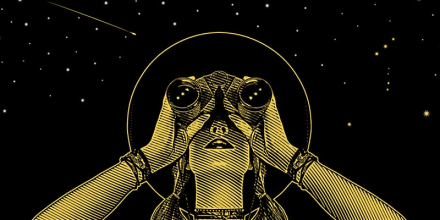International Women's Day 2020: Speed Meet a Scientist

The ANU Research School of Astronomy & Astrophysics and the ANU Institute for Space invite you to celebrate International Women’s Day with an impressive team of outstanding female scientists who will be on hand to answer your questions and talk about their ground-breaking work.
Please join them for a casual ‘speed meeting’ session at the Mount Stromlo Observatory Visitor Centre from 6:00-7:30pm on Friday 6 March. Attendees will have the opportunity to meet a range of scientists in rapid-fire format. Each scientist will be set up at a table and attendees can meet each scientist throughout the evening. Snacks and light refreshments will be available.
Dr Katie Grasha is an observational astronomer at the Research School of Astronomy and Astrophysics at the ANU. She uses high-resolution images of star clusters to study how star formation is organised in local galaxies using the Hubble Space Telescope.
Dr Doris Grosse is a research scientist specialising in adaptive optics with the Advanced Instrumentation and Technology Centre (AITC) at the ANU Research School of Astronomy and Astrophysics. Doris received her PhD from the Faculty of Electrical Engineering and Information Technology of the Ruhr-University Bochum in Germany. Doris is currently developing an adaptive optics system for the measurement, monitoring, analysis and management of space debris.
Sowmya Hassan Krishna is an Instrumentation Engineer, currently pursuing a PhD at the ANU Research School of Astronomy and Astrophysics. Sowmya’s area of research is Laser Guide Stars which is part of Adaptive Optics - a technology used in a telescope to correct the atmospheric turbulence. Outside of her research Sowmya enjoys yoga and dance.
Dr Meridith Joyce is a postdoctoral researcher in theoretical stellar astrophysics at Mount Stromlo Observatory. She designs and uses computational simulations to study the structure and evolution of stars.
Lyla Jung is a PhD candidate in the Research School of Astronomy & Astrophysics, Australian National University. Her research interest is understanding how galaxies evolve, especially the role of gas. She is originally from South Korea where she received her undergraduate and Master’s degree in Astronomy.
Professor Penny King is a geochemist at ANU who studies the surfaces of planets and reactions between gases, liquids and rocks in the solar system. She was a Science Co-Investigator on the Mars Science Laboratory mission.
Shanae King graduated from ANU in 2014 with a BEng (Mechatronics) / BSci (Computer Science). Her interests lie in the development of electronics and embedded systems for space applications. As an Instrumentation Engineer for the RSAA Detector and Electronics Group, she is actively working on the development of an infrared camera system for the upcoming “Emu” space telescope.”
Jing Li is an enthusiastic learner and passionate teacher. Jing has just completed her Masters research, which focused on supermassive black holes at the centre of galaxies and their influence on their host galaxies. If you would like to know more about black holes, come talk to Jing!
Dr Noelia Martinez Rey is a postdoctoral fellow at the Advanced Instrumentation and Technology Centre (AITC), at Mt Stromlo Observatory. She is part of the RSAA Adaptive Optics group, working in Space Situational Awareness and in an innovative concept of laser for the generation of artificial stars on the Australian skies.
Professor Naomi McClure-Griffiths is an internationally recognised radio astronomer, the 2006 recipient of the Prime Minister's Malcolm McIntosh Prize for Physical Scientist of the Year and 2015 winner of the Pawsey Medal of the Australian Academy of Science. Her research has provide insights into the structure and evolution of the Milky Way, and how it interacts with its neighbours. Naomi is playing a leading role in the scientific exploitation of the Australian Square Kilometre Array (SKA) Pathfinder and Australia's participation in the SKA.
Stephanie Monty is a second year PhD student at the RSAA working on both instrumentation and science. She is interested in using ultra high-resolution instrumentation to reconstruct the formation history of the Milky Way. Prior to coming to the RSAA, Stephanie completed her honours BSc in astrophysics with a minor in mechanical engineering at the University of Victoria, Canada.
Josie Munro is a PhD student working on optical instrumentation for very large telescopes, focusing on wavefront correction. Previously Josie has worked on research for adaptive optics systems for microscopes.
Karlie Noon is a Gamilaraay woman and the first Indigenous woman to obtain combined degrees in mathematics and physics. She is about to commence a PhD in astronomy and astrophysics at ANU, having completed her Master of Astronomy and Astrophysics degree in 2019 examining the gas processes of the Milky Way. She frequently speaks and writes about the complexity of Indigenous scientific knowledge and the role of Indigenous science in solving today’s problems.
Georgie Taylor is a second-year PhD student from New Zealand, studying supernova cosmology at ANU. I work on modeling exploding stars called supernovae, which are so bright they can outshine entire galaxies. With these models, scientists can use supernovae to measure cosmic distances, telling us about the shape and movement of our Universe.
This event is open to the public and suitable for adults as well as high school students. Those under 18 must be accompanied by an adult.






